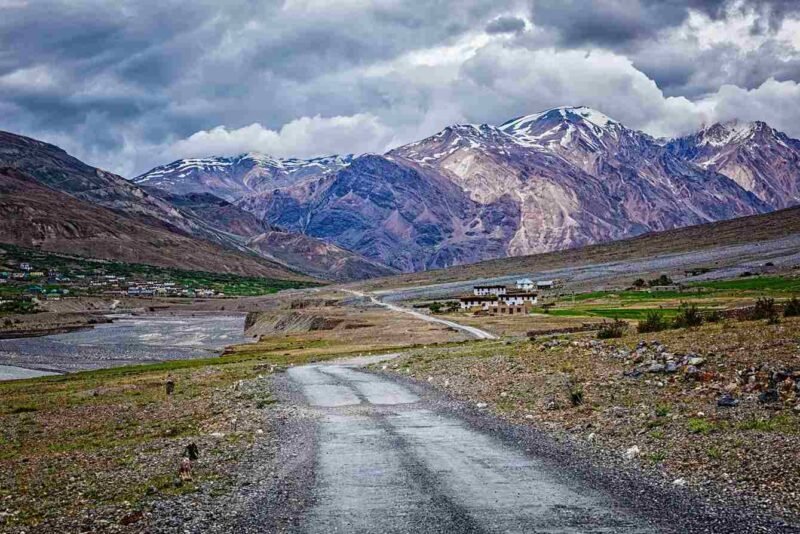Hiking in the Himalayas is a dream come true for many adventure enthusiasts. With breathtaking scenery, varied terrain, and challenging trails, hiking in the Himalayas is an experience of a lifetime. However, the Himalayas can also be unforgiving, and it’s essential to prepare well for the trek. In this article, we’ll cover everything you need to know to prepare for hiking in the Himalayas.
Introduction
Hiking in the Himalayas is a once-in-a-lifetime experience that requires careful preparation to ensure your safety and enjoyment. The Himalayan mountains are known for their breathtaking views, challenging terrain, and unpredictable weather conditions. To make your hiking trip a success, it’s important to prepare well in advance, both physically and mentally. This article will guide you on how to prepare for hiking in the Himalayas, covering topics such as physical fitness, gear, food and water, acclimatization, and permits.
Why Hike in the Himalayas
Hiking in the Himalayas is a unique experience that offers breathtaking views of some of the world’s highest mountains, such as Everest, Kanchenjunga, and Annapurna. It’s a chance to immerse yourself in the local culture, interact with friendly locals, and learn about the Himalayan way of life. Hiking in the Himalayas is also a great way to challenge yourself physically and mentally, push your limits, and achieve a sense of accomplishment that lasts a lifetime.
When to Go Hiking in the Himalayas
The best time to go hiking in the Himalayas is during the spring and fall seasons, which are from March to May and September to November, respectively. During these seasons, the weather is stable, and the skies are clear, providing excellent views of the mountains. The temperature is also mild, making it comfortable for hiking. However, it’s important to note that these are peak seasons, and the trails can be crowded. If you’re looking for a more secluded hiking experience, you can consider hiking during the monsoon season, which is from June to August. Although the weather can be unpredictable during this season, the trails are less crowded.
Physical Fitness Preparation
Hiking in the Himalayas is a physically demanding activity that requires a high level of physical fitness. Therefore, it’s essential to prepare yourself physically before embarking on the trek. You should start preparing at least six months in advance. Here are some physical fitness preparation tips:
Cardiovascular Training
Hiking in the Himalayas requires a lot of cardiovascular endurance. Therefore, you should engage in activities that improve your cardiovascular fitness, such as running, cycling, or swimming. You should aim to engage in these activities for at least 30 minutes a day, three times a week.
Strength Training
Strength training is also crucial in preparing for hiking in the Himalayas. You should engage in activities that build strength in your legs, core, and upper body, such as squats, lunges, planks, and push-ups. You should aim to engage in these activities at least two to three times a week.
Flexibility Training
Flexibility training is essential in preventing injuries during the hike. You should engage in activities that improve your flexibility, such as yoga or stretching exercises. You should aim to engage in these activities at least two to three times a week.
Altitude Sickness
Altitude sickness, also known as acute mountain sickness (AMS), is a common problem that affects hikers who ascend to high altitudes too quickly. It’s caused by a lack of oxygen at high altitudes, which can lead to symptoms such as headache, nausea, and dizziness. To prevent altitude sickness, it’s essential to acclimatize well and follow certain precautions.
Symptoms
The symptoms of altitude sickness include:
- Headache
- Nausea and vomiting
- Dizziness
- Fatigue
- Loss of appetite
- Shortness of breath
- Difficulty sleeping
If you experience any of these symptoms, it’s essential to descend to a lower altitude immediately.
Prevention and Treatment
To prevent altitude sickness, it’s essential to acclimatize well. Acclimatization is the process of gradually adapting to high altitudes by ascending slowly and allowing your body to adjust to the changing environment. You should also drink plenty of water to stay hydrated, avoid alcohol and smoking, and eat a balanced diet.
If you experience altitude sickness symptoms, you can take medication such as acetazolamide or ibuprofen. However, these medications should only be taken under the guidance of a doctor.
Gear and Equipment
Having the right gear and equipment is essential for a successful and safe hiking trip in the Himalayas. Here are some of the essential gear and equipment you need:
Clothing
You should dress in layers to accommodate the changing weather conditions in the Himalayas. You should bring a waterproof jacket, a fleece or down jacket, a hat, gloves, and thermal underwear.
Footwear
Having the right footwear is crucial in preventing blisters and injuries. You should bring sturdy hiking boots
with ankle support and good traction.
Backpacks and Bags
You should bring a comfortable and sturdy backpack that can accommodate all your gear and equipment. You should also bring a waterproof cover for your backpack and a small daypack for day hikes.
Navigation Tools
Having the right navigation tools, such as a map and compass, is essential for navigating the trails in the Himalayas. You can also bring a GPS device or a mobile app with offline maps.
First Aid Kit
You should bring a first aid kit that includes essentials such as bandages, antiseptic, painkillers, and blister treatment.
Food and Water
Proper hydration and nutrition are essential for a successful hiking trip in the Himalayas. Here are some tips for food and water:
Hydration
You should drink plenty of water to prevent dehydration. You should aim to drink at least three to four liters of water per day. You can also bring a water purification system, such as water purification tablets or a water filter.
Food
You should eat a balanced diet that includes carbohydrates, proteins, and fats. You can bring high-energy snacks such as nuts, trail mix, and energy bars.
Acclimatization
Acclimatization is the process of gradually adapting to high altitudes by ascending slowly and allowing your body to adjust to the changing environment. It’s essential to acclimatize well to prevent altitude sickness.
You should ascend gradually, taking rest days at regular intervals, and avoid over-exertion.
Permits and Regulations
To hike in the Himalayas, you need to obtain certain permits and follow regulations set by the local authorities. Here are some essential things you need to know:
Permits
You need to obtain permits to enter certain areas in the Himalayas. The permits are issued by the local authorities and are necessary to ensure the safety of hikers and the preservation of the environment. You should check the permit requirements before planning your trip.
Regulations
You should also follow certain regulations set by the local authorities. For example, you should avoid camping in restricted areas, avoid littering, and respect the local culture and customs.
Conclusion
Hiking in the Himalayas is a challenging but rewarding experience that requires proper preparation and planning. By following the tips and guidelines outlined in this article, you can ensure a safe and successful hiking trip in the Himalayas. Remember to acclimatize well, have the right gear and equipment, stay hydrated and nourished, and follow the local regulations.
FAQs
How long does it take to acclimatize to high altitudes?
It takes about two to three days to acclimatize to high altitudes. You should ascend gradually and take rest days at regular intervals.
What should I do if I experience altitude sickness symptoms?
If you experience altitude sickness symptoms, you should descend to a lower altitude immediately. You can also take medication such as acetazolamide or ibuprofen under the guidance of a doctor.
Can I hike in the Himalayas without a guide?
It’s not recommended to hike in the Himalayas without a guide. A guide can help you navigate the trails and ensure your safety.
What should I do if I encounter wildlife during my hike?
If you encounter wildlife during your hike, you should keep a safe distance and avoid disturbing them. You should also avoid feeding them.
How do I obtain permits for hiking in the Himalayas?
You can obtain permits for hiking in the Himalayas from the local authorities or through a licensed trekking agency. It’s important to check the permit requirements before planning your trip.









